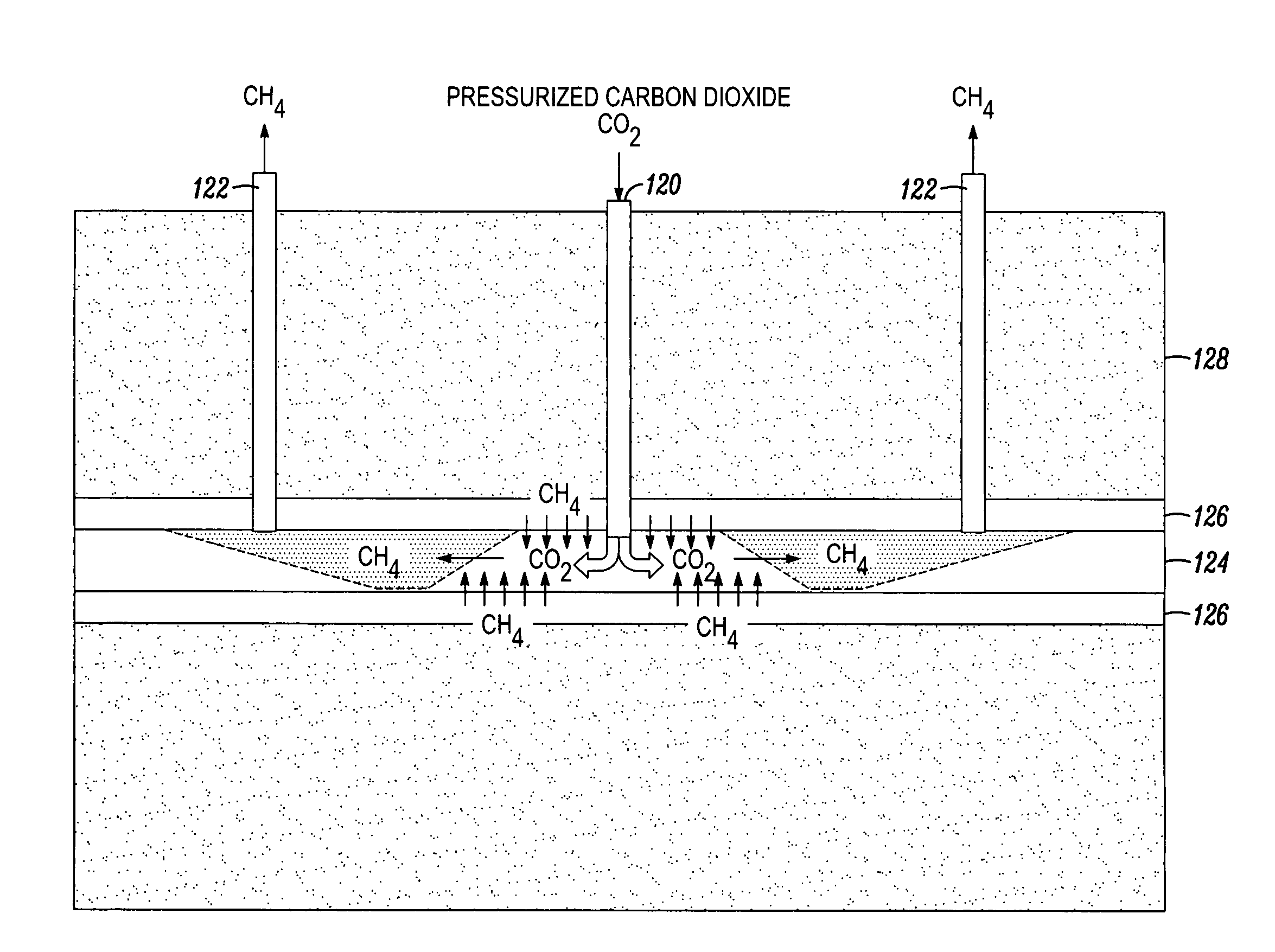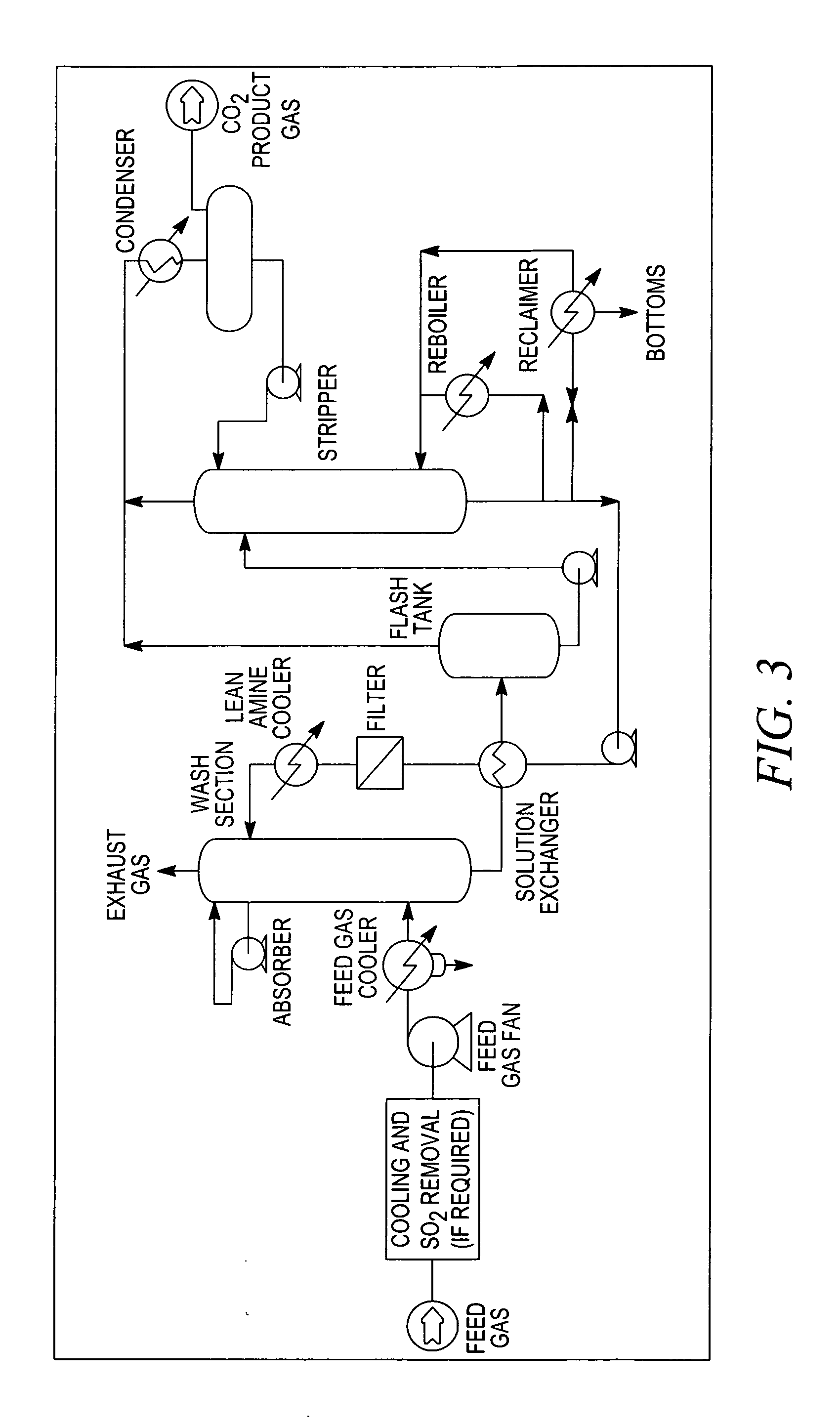Method and apparatus for sequestering CO2 gas and releasing natural gas from coal and gas shale formations
a technology of co2 gas and natural gas, which is applied in the direction of lighting and heating equipment, emission prevention, and well accessories, etc., can solve the problems of chemical and other waste fluids bleeding into water aquifers, reducing the permeability and flow of fluid into the borehole, and forming cracks, etc., to achieve the effect of increasing the permeability
- Summary
- Abstract
- Description
- Claims
- Application Information
AI Technical Summary
Benefits of technology
Problems solved by technology
Method used
Image
Examples
Embodiment Construction
0074]FIG. 14 shows in plan view a typical input pipe within a coal or gas shale formation with four narrow directional voids created by the high pressure liquid CO2 injected through four perforations in the pipe, and the web-like fractures they create;
[0075]FIG. 15 shows in plan view a typical coal or gas shale site showing how the arrays of input and output pipes are located relative to each other, and how the narrow voids created by the pressurized liquid CO2 injections from each perforation in each input pipe are oriented, wherein the different grids are offset to allow the voids to intermesh with each other, to allow more area to be covered by each input pipe;
[0076]FIG. 16 shows another plan view of the coal or gas shale site shown in FIG. 15;
[0077]FIG. 17 shows a cross section of a typical coal or gas shale site showing how the input and output pipes are positioned within the underground strata, wherein the pressurized cold liquid CO2 injected through each perforation within ea...
PUM
 Login to View More
Login to View More Abstract
Description
Claims
Application Information
 Login to View More
Login to View More - R&D
- Intellectual Property
- Life Sciences
- Materials
- Tech Scout
- Unparalleled Data Quality
- Higher Quality Content
- 60% Fewer Hallucinations
Browse by: Latest US Patents, China's latest patents, Technical Efficacy Thesaurus, Application Domain, Technology Topic, Popular Technical Reports.
© 2025 PatSnap. All rights reserved.Legal|Privacy policy|Modern Slavery Act Transparency Statement|Sitemap|About US| Contact US: help@patsnap.com



